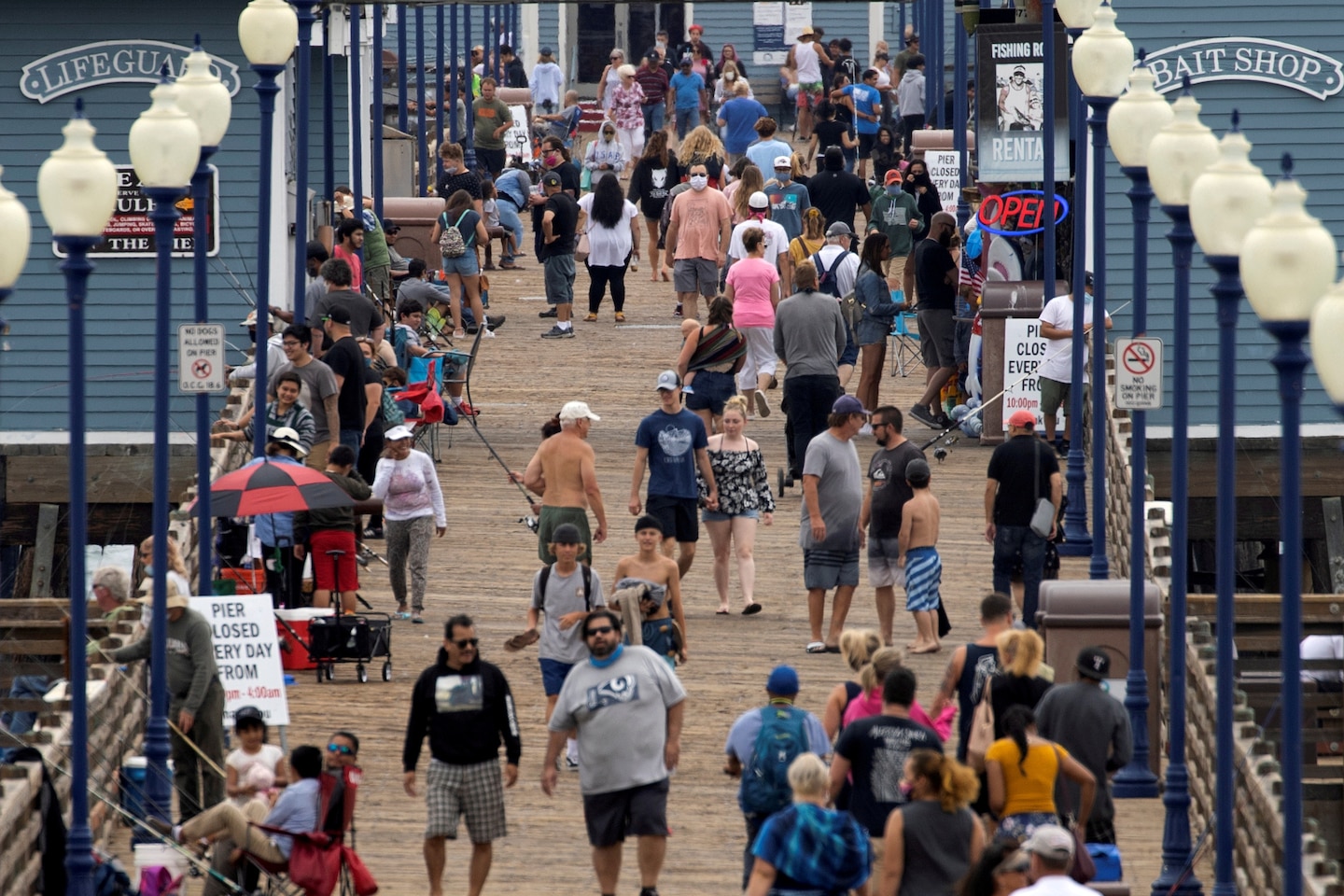How California went from coronavirus success story to disaster — and how it can regain control

What is driving this surge, and how can it be brought under control? California is a large and complex state, and our coronavirus challenge, too, is anything but straightforward. In fact, the best way to approach covid-19 in the Golden State is to think of it as a series of independent regional epidemics, each requiring its own solution.
The most significant outbreak is among the state’s urban and rural Latino populations. Among cases where the patient’s race is known, 55 percent of California’s infections have been in Latinos, who make up just under 40 percent of the state’s population. Latinos and Hispanics are bearing the brunt of the pandemic not only in California but along the entire West Coast, including Oregon (38 percent of cases where the patient’s race is known vs. only 13 percent of the population) and Washington (44 percent vs. 13 percent).
In California, the infected are predominantly low-income, densely housed front-line service workers. Leaving home to work each day, they are exposed to the virus. When they return, it spreads in their households, which are often multigenerational. The consequences are striking. In late April, professor Gabriel Chamie and colleagues from the University of California at San Francisco studied 3,953 individuals living in a single census tract in the Mission District of San Francisco. While the estimated prevalence of infection among non-Latinos in this population was 0.2 percent, for Latinos, it was 3.9 percent — nearly 20 times higher.
In addition, there have been explosive outbreaks in institutional settings in California. As in the rest of the country, California’s long-term care facilities, such as skilled nursing and assisted-living facilities, have been particularly vulnerable; overall, 47 percent of Californians who have died of covid-19 have been nursing home residents.
Two federal correctional institutions, Lompoc in Santa Barbara County and Terminal Island in Los Angeles County, have been particularly hard hit, with nearly 900 and nearly 700 inmates infected, respectively. California’s state prison system has fared no better. There has been a large outbreak in San Quentin State Prison in Marin County, where almost 60 percent of inmates are infected, and other large outbreaks in prisons in Riverside, San Bernardino, Lassen and Kings counties. These outbreaks can devastate the counties in which they are located, not only because of the potential for transmission from prison staff within their communities, but also because of the stress they put on local hospitals.
Finally, homeless shelters and the homeless in general have been disproportionately affected. Significant outbreaks have occurred in both Los Angeles and San Francisco. Some of the risk to the estimated 151,000 homeless Californians has been mitigated by state initiatives such as Operation Room Key, which provides hotel rooms not only to homeless individuals in isolation and quarantine but also to the frail and elderly homeless with underlying conditions that increase their risk of severe infection. Still, more can and should be done.
Given that California is faced with distinct epidemics, no one-size-fits-all statewide solution will be enough. Each outbreak calls for a tailored response. In the case of the homeless, housing, support services and testing are key. For people who choose to behave recklessly, the proper remedy may be stricter enforcement of anti-coronavirus measures. In institutional settings, regular and rapid testing must be a cornerstone of prevention.
Everyone would benefit from education and media campaigns emphasizing the importance of mask-wearing, hand-washing, staying at home if sick and social distancing. But these messages must be culturally and linguistically appropriate for the state’s Latino population. And in order to be effective, disincentives to isolation and quarantine need to be addressed. Individuals need to be assured that while they remain in isolation or quarantine, they will still be able to pay rent, buy groceries and have jobs to return to once the danger has passed. Federal, state and local leaders should do everything in their power to provide these assurances.
The Golden State’s swift and coordinated shutdowns helped control the virus in March and April. Now, state and local leaders will need to devise more creative, targeted solutions. As case numbers and deaths mount daily, Californians hope we are up to the challenge.
Read more:






